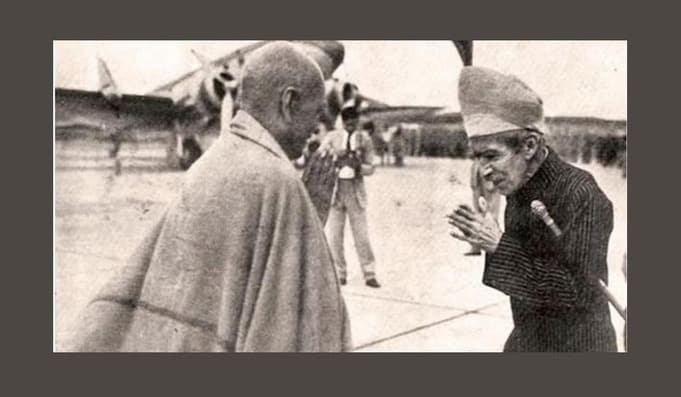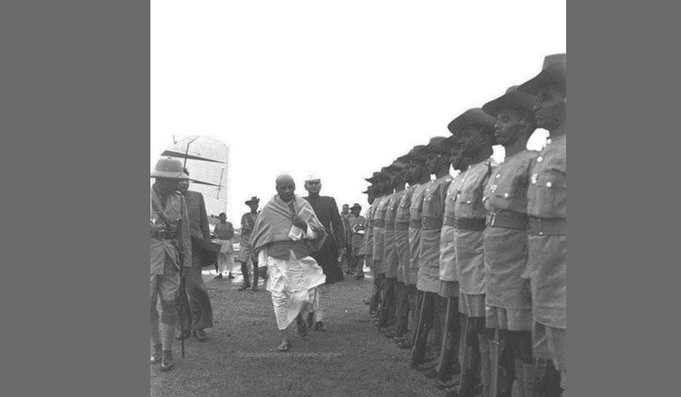Here is Exactly How Hyderabad Became Part Of India
Seventy years prior, on September 17, 1948, around early afternoon, Hyderabad stopped to exist as a regal state after a war that kept going all of 109 hours. It would have continued for longer had India not had the option to obstruct the previous kingdom’s endeavours to acquire weapons for an extended clash.
Hyderabad turned out to be a piece of India over a year after the last’s presence as an autonomous country. Administered by the inherited ruler Nizam Mir Osman Ali Khan, the 212,000 sq.km kingdom liked its opportunity as a free nation.
Halt Agreement
Dissimilar to the Instrument of Accession with India marked by other royal states at the hour of Independence, the Nizam selected a three-part group to arrange a Standstill Agreement. The Agreement marked on November 29, 1947 by Governor General Lord Mountbatten and Nizam Osman Ali Khan, determined that it would be substantial for one year and that remote undertakings, safeguard and interchanges would be in India’s control while the Nizam had command over household issues.
Declassified political links between India War Office Staff, the Commonwealth Relations Office (CRO) and the UK Foreign Office, chronicled in the British Library, uncover that following Independence, India played a high-stakes discretionary game in London to staunch the progression of arms to Hyderabad in November 1947. This lack of weapons at last constrained the Hyderabad armed force to give up inside four days with restricted Indian setbacks.

The Nizam explored for arms no matter how you look at it attempting to get them from France, tapping Pakistan for provisions lastly going to firearm sprinters. The job of Australia-conceived pilot Sidney Cotton’s job in the vehicle of weapons from Karachi to Hyderabad is the stuff of legends.
The British government played alongside India by inducing France against offering German weapons to Pakistan, which thus needed to channel them to Hyderabad.
The first of the arrangement in the strategic links sent to Donaldson at the CRO by R.H.S. Allen of the Foreign Office starts harmlessly enough. “French Embassy educated Foreign Office on first November that Pakistan Trade Commissioner in London as of late spoke to French Authorities in Paris that his administration critically wanted 600,000 rifles, same number of guns and 300,000 light and overwhelming automatic rifles from previous German weapons in France. It included that, if France couldn’t supply, his government had different ideas from Sweden, Belgium and the Netherlands,” says the link stamped Important/Top Secret by CRO.
The day is praised each year by the votaries of Telangana – that is basically the old Hyderabad state topographically, excepting regions that turned out to be a piece of present-day Maharashtra and Karnataka – as Hyderabad Liberation Day. Then again, actually on the off chance that they knew the carnage that occurred, at that point, they would acknowledge there isn’t a lot to celebrate about.
In spite of the fact that its specialized names were “Activity Polo” and “Activity Caterpillar”, it was all the more normally alluded to as “Police Action” and keeping in mind that there was no obstruction from the Nizam’s Army, regular folks enjoyed plunder and killings, generally of the minority network. Also, the Indian state chose not to see what occurred.
How Hyderabad Got Its Name?
Hyderabad was referred to initially as Bhagyanagar, a city Sultan Muhammad Quli of the Qutub Shahi line had established and named after his dearest Bhagmati or Bhagyamati in 1590. When she entered the regal family and grasped Islam, she was rechristened Hydermahal and as a characteristic result, the city got its subsequent name, Hyderabad.
Who was this Bhagmati? Mughal writers disclose to us she was a prostitute from the town of Chenchulam (Shalibanda) crosswise over Muse waterway. French explorers Thevenot and Tavernier authenticate the customary view that Quli had taken Bhagmati as his better half. She was one of the numerous Hindu young ladies who, however legitimately married to lords and nobles, are alluded to by Muslim history specialists of the Mughal time frame as concubines, paramours and whores. In any case, the reality was that in the royal residences of their sultans they appreciated full opportunity and were concurred illustrious treatment.
Mughal writers Abul Faiz, Nizamuddin Bakshi, Abul Baqi and Khafi Khan are consistent that Muhammad Quli was extraordinarily interested by the beguiling concubine. He was the grandson of Sultan Quli of Hamdan of Turko-Iranian plunge who established the Qutab line in 1518 AD.

Numerous tales have been passed on how interesting Bhagmati was. The Purana Pul (Old Bridge) also has a story hanging by it. The story is that once when Quli came riding on a horseback to go crosswise over Muse to his Chenchulam darling, the waterway was swollen and flooding. In any case, that didn’t prevent him from his interest. His dad Ibrahim Qutub Shah came to know about this. What did he do? He requested a scaffold over the waterway, making Chenchulam open to the royal residence seven-days seven days. The extension was finished in 1578.
When a lot after his crowning ordinance Quli found nature of the invulnerable fortification of Golconda not any more salubrious. It was then that he established the new city, first named Bhagyanagar and later as Hyderabad. The artist ruler had pet names for all his 17 ladies kept at his call. Hydermahal, it is referenced in his very own book, ‘Kulliyath’, was Bhagmati’s pet name.
Bhagmati had entered Quli’s life when he was a sovereign. Their enduring sentiment was in excess of a legend. Wherever the ruler of adoration moved the sultan had a thousand steeds gotten control over. The legend isn’t imminent on the off chance that she was thin, or fat and rich, curvy or licentious and wonderful, however it is chronicled that the maiden was energetically enamoured with the man in the ruler.
Also Read: 30 Famous Things In Hyderabad, Probably You Don’t Know